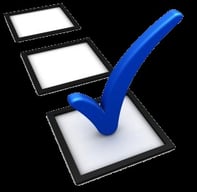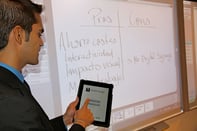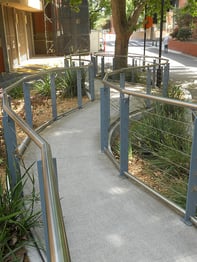Published on
The New Liberal Arts: Where Mobile Technology Meets Mindful Technology

Let’s face it: as we enter the third decade of the 21st century, there is a new normal in higher education for both students and the institutions that serve them. In terms of the former, we have never enrolled students who are as racially, ethnically, and age diverse, as likely to be juggling multiple life roles (employee, parent, student) and as impacted by financial hardships as is the case today. At the same time, institutions of higher learning, particularly tuition-driven liberal arts institutions (TDLA), have never been scrutinized so critically, in terms of their cost and value proposition, effectiveness in building career pathways, and likelihood of improving graduates’ overall lives. To respond to these immediate challenges and anticipate the next wave of challenges and opportunities, colleges must be willing and able to change.
Over the last several years, Hiram College has emerged as a national leader in envisioning and implementing the types of changes that will simultaneously strengthen the institution and provide concrete benefits to students. As this article reveals, the systemic changes at Hiram, dubbed the New Liberal Arts™ (NLA), are of benefit to just about everyone.
Hiram’s New Liberal Arts — a powerful combination of integrated learning, high impact activities, and mindful technology—does more than prepare students to be well read and well rounded. It is also designed to develop intellectually agile and socially responsible thinkers and doers. There are many of this model’s features that are worthy of review. At the moment, Hiram is using mindful technology to integrate classroom and out-of-classroom activities while leveraging the types of high-impact experiences for which small colleges are often known.
Tech and Trek: The Impact on Classroom Learning and Out-of-Classroom Treks
In fall 2017, Hiram College became one of just a few universities in the country — and Ohio’s only four-year college at the time — to launch a campus-wide mobile technology program (Tech and Trek™). Thanks to a $2.1 million donation, Hiram equipped all full-time undergraduates along with all faculty and staff with an iPad Pro, Apple Pencil, and keyboard. Before and during the program’s inaugural year, colleagues in the Office of Learning Technologies coordinated a series of training workshops that explained how to use this 21st century technology in mindful ways within the education space. To underscore the program’s differentiating “mindful component” and encourage students to get out and about with their devices, the college also gifted a pair of high-quality hiking boots to all full-time students in the Traditional College. From day one, Tech and Trek was a different type of mobile technology program.
Classroom Learning
Interactive teaching that integrates the experiences, expertise, and observations of the faculty, class participants, and class guests is a hallmark feature of the New Liberal Arts. Two and a half years into the program, approximately seventy percent of all faculty have reported using the new mobile technology in their classroom, and responses from routine student surveys have strongly suggested that the technology helps students learn and stay focused on the task at hand. The increases in learning and focus are fueled by some of these Tech and Trek pedagogies:
- FaceTiming or Skyping with content experts in distant places
- Using social networking tools to gather observations and perspectives from students, teachers, and leaders on and beyond the campus
- Utilizing presentation apps and/or music and artistic tools to create state-of-the-art visual and audio aides
- Curating and co-creating interactive e-books that lend themselves to group annotations, group highlighting and note sharing
- Employing simulation and 3D modeling tools that help students examine physical or social phenomena
- Requiring incoming students to create and maintain an e-portfolio that contains signature assignments, personal reflections and faculty and advisor feedback
Outside Treks
In addition to bolstering active classroom learning, Tech and Trek is being incorporated into study-abroad trips, internships, guided field work and research experiments now required at Hiram College. Shortly before Tech and Trek was implemented, Hiram faculty modified degree requirements to mandate that all students successfully complete an internship, study-abroad trip or guided research project before graduation.
Today, the faculty and staff who coordinate and deliver study-away trips, internships, service-learning projects and guided research teach students to proactively consider how they will use technology in a mindful and venue-appropriate way. In doing so, students are able to capture, compile, organize, analyze and reflect on both the expected and unexpected people, places and things they encounter during these high-impact experiences.
The Next Step for Tech and Trek: Digital Literacy
As faculty continue to embed technology into course work and staff continue to deploy it in co-curricular experiences, the need to develop digital literacy is surfacing as an important next step for the program. Hiram began to pave the way for this development during its annual Tech and Trek Conference that brought Alan November to the keynote stage. In his presentation, Mr. November underscored the effects of information overload and then engaged the audience in a conversation on information access, validity, and appropriateness. It was an early step in helping faculty and staff understand for themselves how web-based materials are organized and accessed so that they can share this vital information and teach students the skills they need to be informed, safe, and successful 21st-century learners.
As we continue to build this understanding, Hiram faculty and staff are well aware that today’s challenges of accessing, culling, and selecting research documentation is far different than it was in the past. In previous decades, access to information was the challenge. Students were required to visit a physical site — most often, the college library — to obtain or order (via inter-library loans) the materials they needed for a research project. These facilities were staffed by trained reference librarians who guided students through their search. Today, access to information is not the obstacle students must overcome. In seconds, students can launch and bookmark all kinds of web searches on their personal mobile devices. Getting information is easy; determining what kinds of information (from what kinds of searches or web inquiries) are most appropriate or legitimate for the project at hand is not.
Hiram seeks to assist students in sharpening their digital literacy skills. Still, we haven’t abandoned the goal of introducing students to conventional resources (books, paper journals, and microfilm) and to physical facilities (the college library). For these reasons, we have situated our new Tech and Trek program in a renovated library commons. It’s the perfect place to ensure that students get broad instruction on how to conduct an informed electronic search, locate obscure or original manuscripts that may not be found on the web, and engage in group study and collaborative research.
One Step Hiram Won’t Take: Habitual or Perfunctory Use of Technology
From the outset, one of the most fundamental assumptions grounding Hiram’s Tech and Trek program was that more is notalways better when it comes to technology. Rather than focus on the quantity of technologies and their uses, faculty and staff endeavor to teach and develop mindful technology. We offer a plethora of opportunities that promote digital etiquette and examine the intersection of mindful and mobile technology. On the academic side, we created and delivered a “pop-up” course called Mind, Body, Tech that prompted students to examine their personal screen time, encouraging them to supplant some of it with “green time,” or quality time in nature. Similarly, our co-curricular offerings included several mindful technology programs that gave faculty, staff and students the opportunity to practice this type of mindfulness, emphasizing all the while that “practice makes progress, not perfection.”
Perhaps our most intense offerings in mindful technology are those that are offered at Northwoods, one of two biological field stations, this one in Michigan’s Upper Peninsula.
Starting last year, Hiram committed to offering a summer Mindful Technology retreat at this beloved destination. During these “Balancing Screen Time with Green Time” retreats, students and facilitators have very limited time with their devices while they jointly focus on a topic or skill for the experience. Once they return, they often report a greater sense of productivity and intentionality while using technology.
Conclusion
Since 1850, Hiram has been a place where critical thinkers and doers have found a home in which to learn and launch. In 2020, Tech and Trek offers the current generation of students the proper tools to take on today’s complexities and opportunities. Tech and Trek’s universally distributed iPad Pros and hiking boots ensure that all students begin their undergraduate journey on a level playing field with top-notch equipment. It also incentivizes faculty and staff to design a 21st-century mindset and skillset that students are able to demonstrate before graduation. Three years into the program, we’re aiming to have our graduates demonstrate an effective and critical use of technology, an understanding of digital literacy along with integrated and interdisciplinary problem-solving skills.
Regardless of what challenges arise, technology will only be as effective as its users’ intentions and aspirations. It is this critical, creative, and practical understanding of technology that captures the ethos of the New Liberal Arts. This ethos has inspired our community of learners to be simultaneously future-focused and grounded in our deep roots, mindful of the present moment’s needs.
Author Perspective: Administrator



